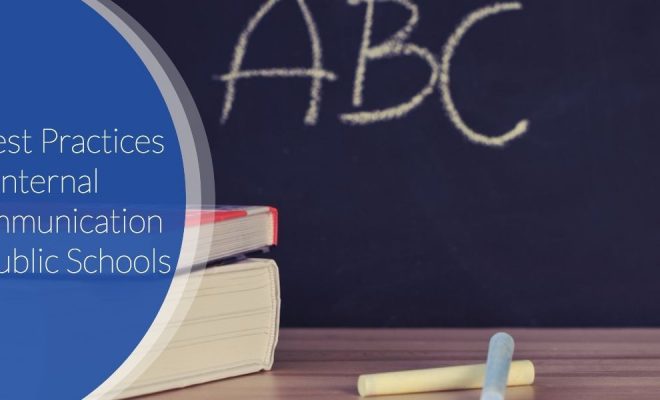6 Best Practices for Internal Communication in Public Schools

Written by Eric Walters and Karen Gerberry
Internal communication may be more important than many think. 42% of communication is delivered through other people. Whether it is information needing to be communicated to teachers, students or administration a student success is highly dependent on the frequency and quality of communication. Successful communication between teachers and parents is most common in schools with well-informed, effective educators.
Schools, realizing this, have implemented practices to communicate valuable information within their school systems. What are some of these strategies and what benefits do they provide to these school districts?
- Developing New Policies
School systems can often be dispersed, making meetings and collaboration difficult. With advancements in technology, however, sharing thoughts and ideas is becoming increasingly easier. In the past, in order to make policy changes, the school board would have to coordinate meetings between all interested parties to develop new policies. Now, with the use of wikis, administrators can access information regarding changes in the school district and make adjustments accordingly.
Not only has technology made it possible for people to access this information from anywhere at any time, but it has also expanded the reach of this data. Before the use of wikis, many parents and faculty were left out of the policymaking process altogether. Whether the problem was logistical or time related, some would argue that there was not an accurate representation of all interested parties.
By using technology to streamline an antiquated process, school districts have afforded many people the opportunity to provide insights and opinions on some of their most important educational concerns.
- Schools Employing Internal Communications Managers
With all of the responsibilities involved with being an educator, it is easy to get caught up in day today activities and lose sight of larger issues within the school district. Schools are realizing that a disconnect exists in the communication process and are becoming more active in increasing engagement with employees.
To assist teachers in becoming more involved with internal communication, some districts are employing Internal Communications Managers. These managers act as facilitators of information throughout the school district. Their primary responsibilities are to keep employees informed on major initiatives, events, and news affecting the school district.
Although this method is slightly different than wikis, the idea is essentially the same. The Internal Communications Managers help teachers stay involved by gathering the information and releasing it to interested parties, thus reducing teachers’ time devoted to the discovery of this information.
- Developing Employee Portals
There are many facets and resources on school districts’ websites that provide valuable information to visitors. But, often, what lies within these sites are valuable portals tailored for specific audiences.
At this point, it is commonplace for both students and teachers to have portals in the school district website. Portals are valuable resources for educators to find information that pertains strictly to the data that is important to them. With the obvious value that these portals provide, think of the value that may be added if every school made these resources available to their employees.
- Being Recognized by Leadership
Few things at the workplace are more satisfactory than hearing how much your boss appreciates you. So, when we talk about internal communication in schools, it is important that we address the interaction between the school board and the educators. It is vital that the school board keeps acknowledge educators that are making an extraordinary effort to enhance students’ education. When board members recognize these educators, they need to implement positive reinforcement practices to encourage future innovation.
On the other hand, if the school board notices teaching practices that are less than expected, they can communicate this to educators and push for corrective action.
- Using Digital Signage
The challenges of communicating with staff in a public school system are apparent. Whether checking and responding to emails or logging into portals, communication can require a great deal of effort.
Because of this challenge, we are now seeing schools take the “billboard” approach throughout their buildings. These digital signs are easily recognizable and don’t require additional effort to absorb the information. Schools are using these billboards to display both general and emergency information.
If these signs are placed throughout the school, educators will also see them as they pass by. This eliminates the need to have a phone conversation or to send out a memo
to all interested parties. The digital signage creates a platform to simultaneously provide all of the necessary information to the entire staff.
- Remembering that Communication is Key
If we want educators to be as effective as possible, we need to keep them informed. Parentteacher communication is crucial to student success, and in order to maximize the effectiveness of teachers we need to master the internal communication process.
With these 6 best practices for better internal communication in public schools you are sure to see an improvement in overall employee communication. A school that is engaged together will have students that succeed together. To kick off your communication this school year sign up for your FREE trial of Ving here. It is time to start using a tool that allows you to be in control of your communication and start knowing what is and isn’t working at your school.







